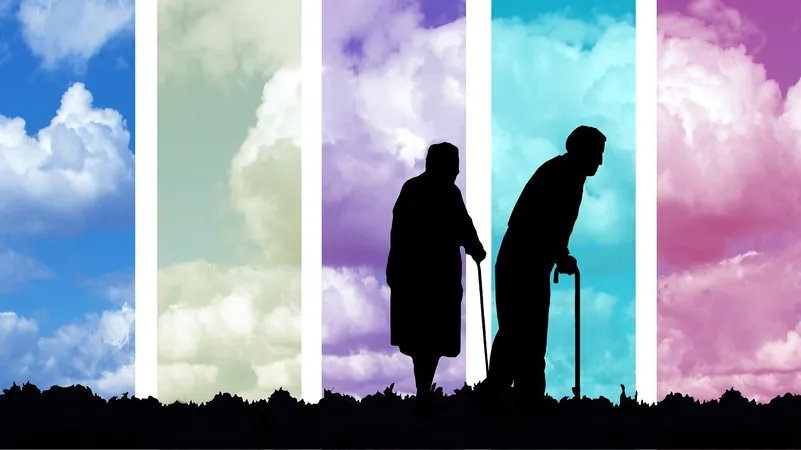
Shocking Revelation: The True Cost of Fatal Falls Among Older Adults Exceeds Firearm Deaths in the U.S.!
2024-10-01
Introduction
A groundbreaking new study has unveiled that the economic burden of fatal falls among older adults, specifically those aged 45 to 85 and above, significantly surpasses that associated with firearm-related deaths in the United States. This alarming trend, highlighted in the open-access journal Trauma Surgery & Acute Care Open, calls for immediate action to address the pressing issue of fall prevention in the aging population.
Statistics and Trends
According to the research, falls contribute to approximately one in five injury-related hospital admissions. The World Health Organization ranks falls as the second leading cause of unintentional injury fatalities worldwide, with individuals over the age of 65 being particularly at risk. The team of researchers emphasizes the critical need for preventive measures to combat this escalating problem.
Comparison with Firearm-Related Deaths
While firearm injuries also impose a substantial economic impact, they tend to affect younger demographics more disproportionately, leading to a greater loss of life in terms of potential years and productivity. However, with the continuous population growth of older adults—thanks largely to advancements in healthcare—this economic landscape is shifting dramatically.
Research Methodology
To delve deeper into these costs, researchers meticulously calculated the average medical expenses and combined them with estimates of the economic impact of lost life years and productivity due to both fatal firearm injuries and falls between 2015 and 2020. Utilizing data from the Web-based Injury Statistics Query and Reporting System (WISQARS), they analyzed fatal cases across various age groups, uncovering startling statistics.
Findings
From 2015 to 2020, the total number of injury-related deaths in the U.S. reached an astonishing 1,454,007, with falls accounting for 230,663 (16%) of these fatalities—193,643 of which were among individuals aged 65 and older. In comparison, firearm-related injuries claimed 239,352 lives during this period, with 39,980 of those being over 65 years old. The years of potential life lost due to falls amounted to a staggering 1,500,900, eclipsing the number for firearm injuries, which stood at 8,909,758.
Economic Impact
The economic toll is equally striking. In the five-year span between 2015 and 2020, total medical costs for fatal falls reached approximately $1.43 billion, dwarfing the $246 million attributed to firearm injuries. Moreover, the average medical expense per fatal fall case was about $76,982, starkly contrasting with the $44,522 average for firearm-related cases. This discrepancy is likely due to the extensive treatment often necessary for fall injuries, including surgeries, prolonged hospital stays, and rehabilitation, while firearm victims frequently do not survive their injuries.
Long-Term Consequences
Adding to the complexity, falls can lead to lasting health issues which necessitate ongoing medical care, imposing significant financial burdens on both affected individuals and healthcare systems at large.
Increasing Rates of Fatal Falls
The study also notes significant increases in fatal falls across all age groups, especially among those over 65, where the rate surged to nearly 7% post-2019, compared to approximately 3% prior. As the population ages, the proportion of individuals aged 65 and older in the U.S. has skyrocketed by nearly 39% between 2010 and 2020, stressing the urgent need for targeted interventions.
Conclusion and Call to Action
Despite acknowledged limitations in the study—such as the exclusion of data on non-fatal firearm injuries—researchers argue that this analysis shines a critical light on a crucial public health dilemma. As societal discourse often focuses intensely on gun violence due to its immediate impact, the hidden economic burden posed by geriatric falls cannot be overlooked. In conclusion, the researchers call for policymakers to recognize the growing threat posed by falls among older adults as a pivotal public health challenge. They urge the implementation of proactive strategies aimed at preventing falls, improving specialized healthcare for the elderly, and strategically allocating resources to combat this escalating crisis. The findings serve as a wake-up call: it’s time to prioritize our aging population’s health before it’s too late!




 Brasil (PT)
Brasil (PT)
 Canada (EN)
Canada (EN)
 Chile (ES)
Chile (ES)
 España (ES)
España (ES)
 France (FR)
France (FR)
 Hong Kong (EN)
Hong Kong (EN)
 Italia (IT)
Italia (IT)
 日本 (JA)
日本 (JA)
 Magyarország (HU)
Magyarország (HU)
 Norge (NO)
Norge (NO)
 Polska (PL)
Polska (PL)
 Schweiz (DE)
Schweiz (DE)
 Singapore (EN)
Singapore (EN)
 Sverige (SV)
Sverige (SV)
 Suomi (FI)
Suomi (FI)
 Türkiye (TR)
Türkiye (TR)